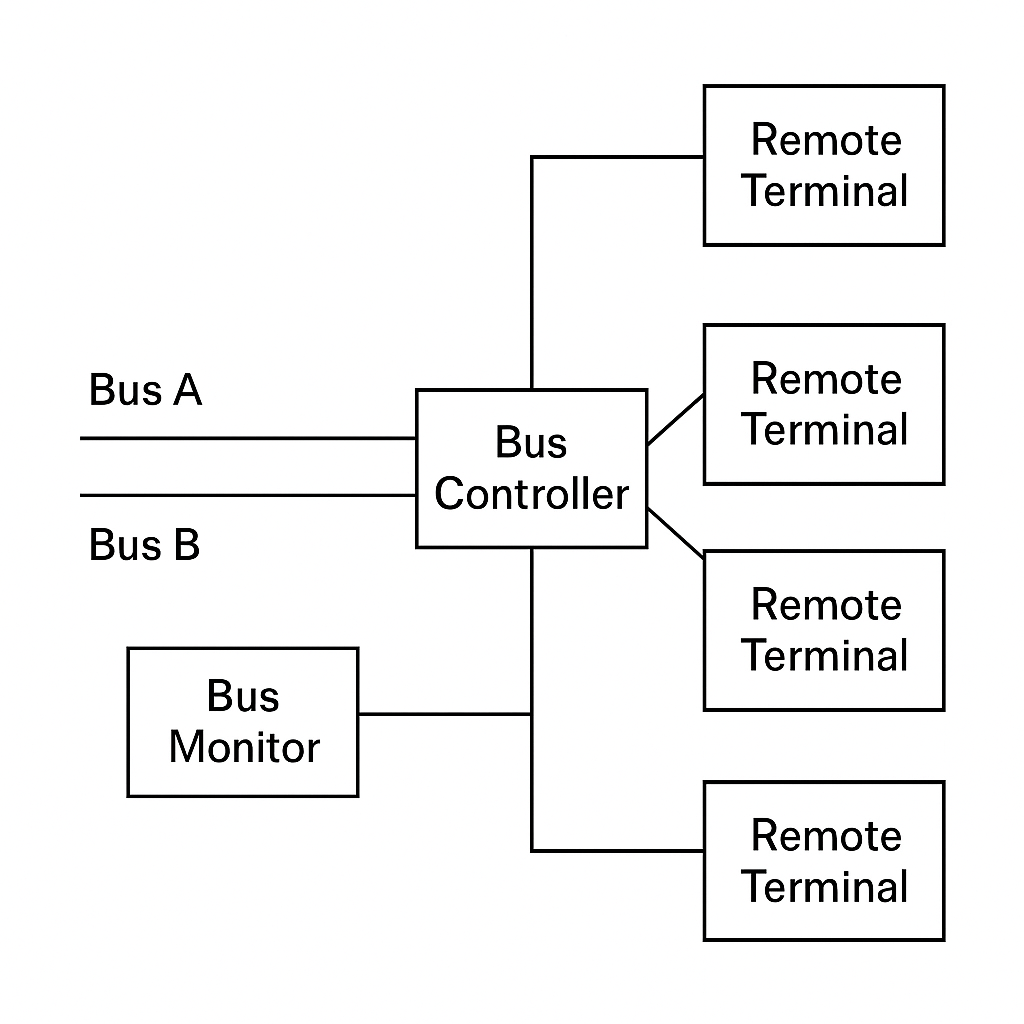mil_std_1553
Understanding MIL-STD-1553: The Backbone of Military Data Bus Communication
Introduction
In modern defense and aerospace systems, reliable, deterministic communication is critical. Whether controlling weapon systems, navigation avionics, or sensor fusion, military platforms demand fault-tolerant and time-predictable data exchange. MIL-STD-1553, a digital, command/response, time-multiplexed serial bus standard, fulfills this need and has remained a mainstay since its inception in the 1970s.
What is MIL-STD-1553?
MIL-STD-1553 (pronounced “mil standard fifteen fifty-three”) is a military standard developed by the U.S. Department of Defense. It defines a method for reliable, high-integrity communication between avionics subsystems over a serial data bus. Initially intended for use in the F-16 fighter jet, its robust design has since led to its adoption in spacecraft, ships, ground vehicles, and commercial aviation.
Key Features
- Data Rate: 1 Mbps (Manchester encoded)
- Architecture: Command/Response, Time Division Multiplexed
- Redundancy: Dual-redundant bus lines for fault tolerance
- Topology: Linear bus with passive stubs (typically with transformers)
- Maximum Devices: 31 Remote Terminals (RTs) per Bus Controller (BC)
- Message Types: RT-to-BC, BC-to-RT, RT-to-RT
- Transmission Media: Twisted Shielded Pair (TSP) cable
Bus Architecture
A MIL-STD-1553 system consists of the following primary components:

- Bus Controller (BC): The master node that initiates and controls all communications.
- Remote Terminals (RT): Slave devices that receive and respond to the BC’s commands.
- Bus Monitor (BM): A passive listener for monitoring traffic.
- Dual Bus Lines: Two physically separate buses (Bus A and Bus B) provide redundancy.
How It Works
- Message Cycle: The BC sends a command word to an RT.
- Data Transfer: The RT responds with status and data or receives data.
- Timing: Each message transaction is tightly timed and acknowledged.
Messages use three types of words:
- Command Word
- Data Word
- Status Word Each word is 20 bits: 16 data bits + 4 parity and sync bits.
Applications
MIL-STD-1553 is widely used in:
- Fighter jets
- Helicopters
- Spacecraft
- Missile systems
- Naval vessels
- Ground vehicles
It enables interoperability between components from different vendors and withstands harsh electromagnetic and physical environments.
Advantages
- Determinism
- High Reliability
- Long Lifespan
- Interoperability
Limitations
- Low Bandwidth
- Fixed Architecture
- Complexity
MIL-STD-1553 vs. Modern Protocols
MIL-STD-1553: 1 Mbps, Strong Determinism, Built-in Redundancy, High EMI Resistance, Real-Time Ethernet: 100 Mbps+, Determinism with TSN, Configurable Redundancy, Moderate EMI, Real-Time with TSN CAN Bus: 1 Mbps (CAN FD up to 8 Mbps), Moderate Determinism, Varies in Redundancy, Moderate EMI, Real-Time
Conclusion
Despite being over 40 years old, MIL-STD-1553 continues to play a crucial role in mission-critical defense and aerospace systems. Its reliability, fault tolerance, and deterministic nature make it an enduring standard, especially in safety-critical domains where newer high-speed buses may not yet meet certification or robustness requirements.